
A0S01 – Semba at a Glance
Semba, the financial heart of Osaka Semba is said to have been where the worke …
中央区の歴史をパネルにしてみました。江戸時代絵図から現代の写真まで、歴史ある中央区のを絵と写真で解説。
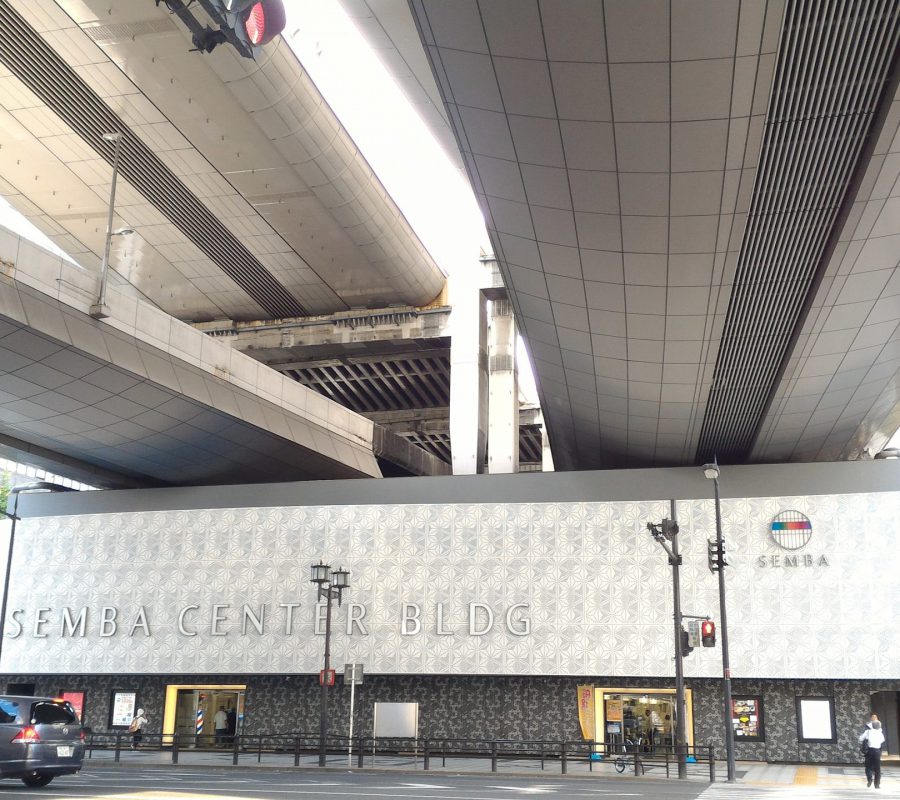
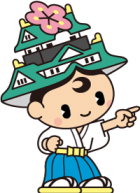
The Semba area, which centers around the Semba Center Building, has developed as an area with a long history of being a home for wholesalers of textiles, accessories, and sundries. After the end of World War II, improvement of urban infrastructure, including the new construction and the expansion of streets such as Mido-suji, Yotsubashi-suji, and Sakai-suji, was carried out at a rapid pace. Amongst all that change, Semba underwent a massive transformation from a district structured around the rivers flowing east to west to today’s current structure with Mido-suji serving as the north-south axis of the city. As a result, the Dobuike area, where textile wholesalers are concentrated, also boomed, and it has become a commercial area that represents not only the Kinki region but western Japan as a whole.
The Semba Center Building, which stretches from Mido-suji in the west to beyond Sakai-suji in the east, was constructed in 1970, its completion timed in conjunction with the EXPO ’70 Osaka, and has become the new face of Semba.
In 2015, its outer walls were completely refurbished and its image was made new by covering the outer walls with modern aluminum paneling. It celebrated the 50th anniversary of its opening in March 2020, and serving as a home not only for wholesalers but also retailers, it has become a landmark that represents the area.
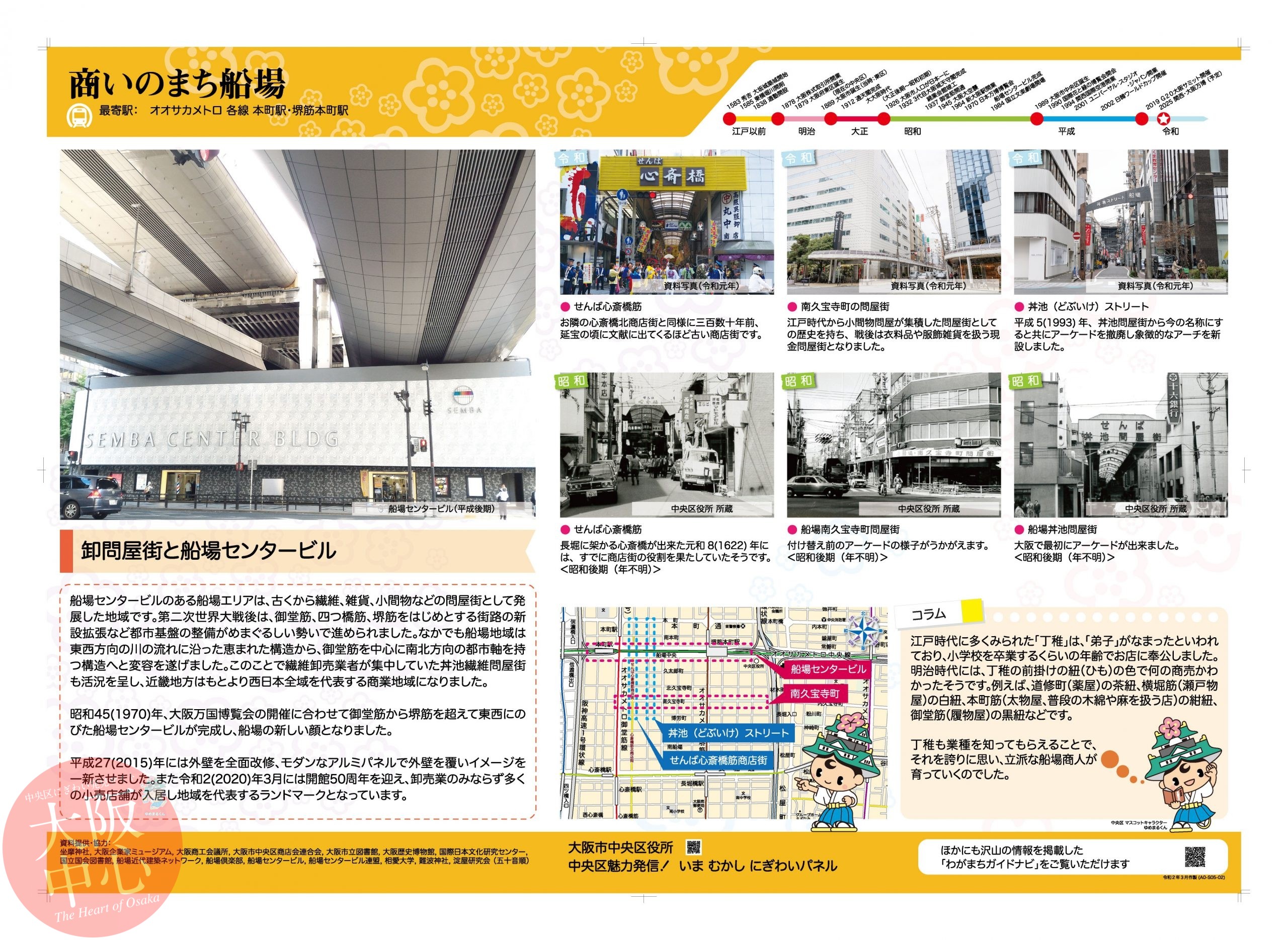
It is said that the term “detchi” (apprentice) that was common in the Edo period comes from a corrupted form of “deshi” (disciple), and when children reached the age of graduation from elementary school they began to work in shops. In the Meiji era (1868-1912), the types of businesses apprentices were involved in could be identified according to the color of the strings on their aprons. For example, brown strings for Doshomachi (pharmacies), white for Yokobori-suji (china shops), navy for Hommachi-suji (cotton and hemp fabric stores), and black for Mido-suji (shoe shops).
By being known for their types of business, apprentices came to take pride in their work, which helped them mature into fine Semba merchants.
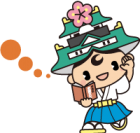

Semba, the financial heart of Osaka Semba is said to have been where the worke …
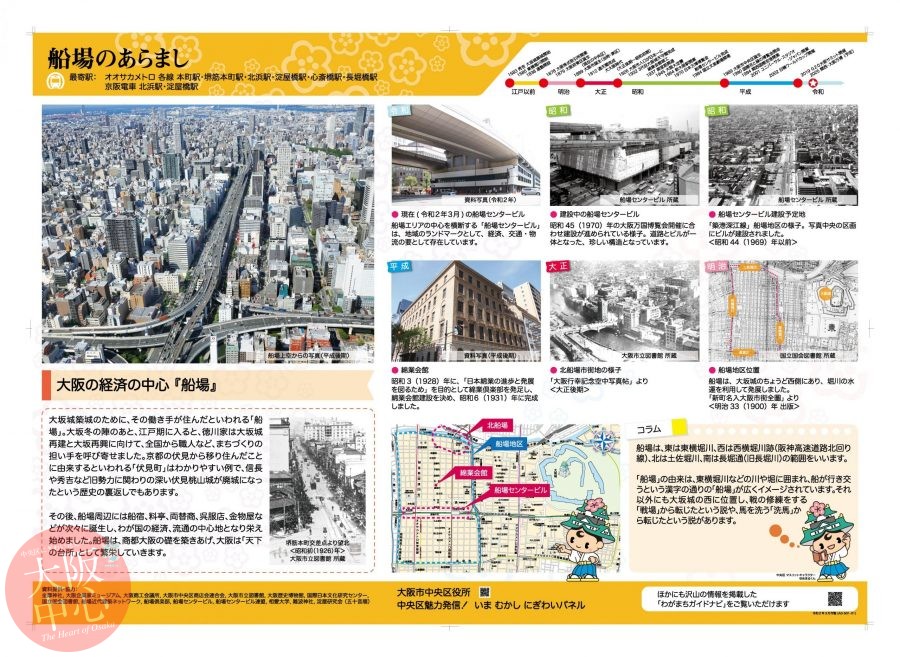
The history of the merchant Yodoya and Yodoyabashi Bridge Yodoyabashi Bridge, …
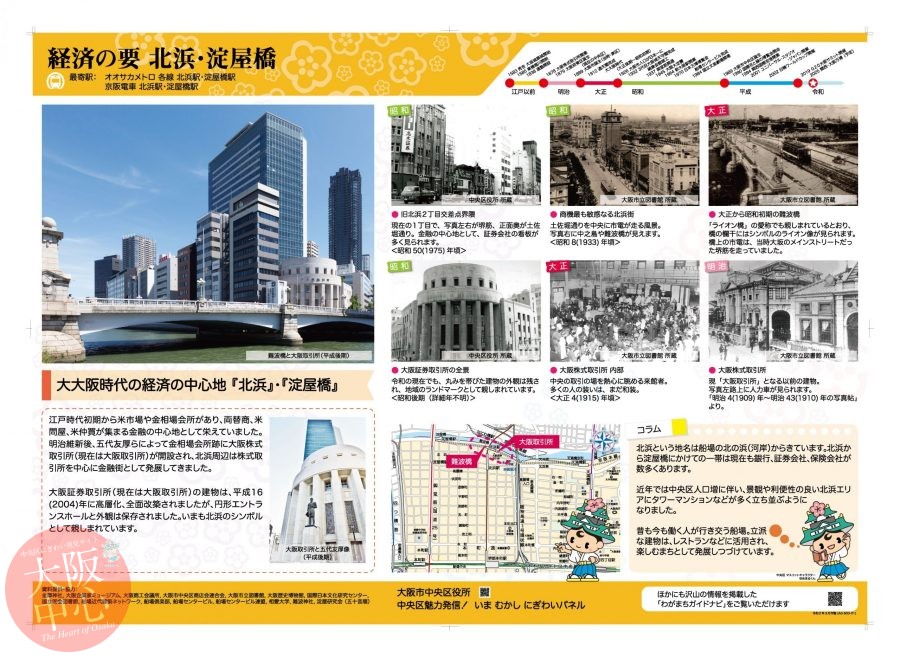
Kitahama and Yodoyabashi were the economic center during the Dai-Osaka (Great …
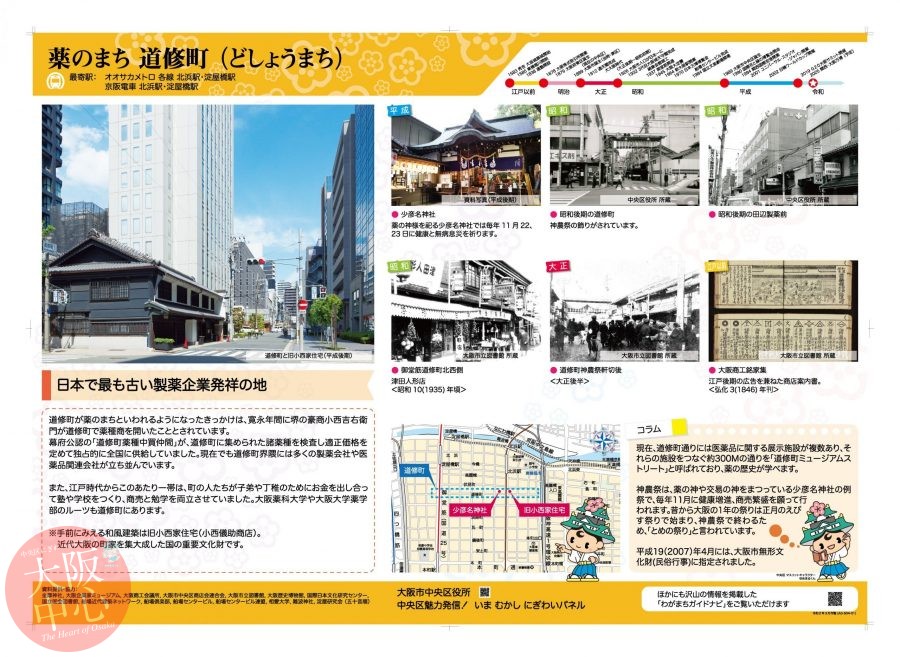
Birthplace of Japan’s oldest pharmaceutical company It is said that Doshomachi …

Semba Center Building and the wholesale district The Semba area, which centers …
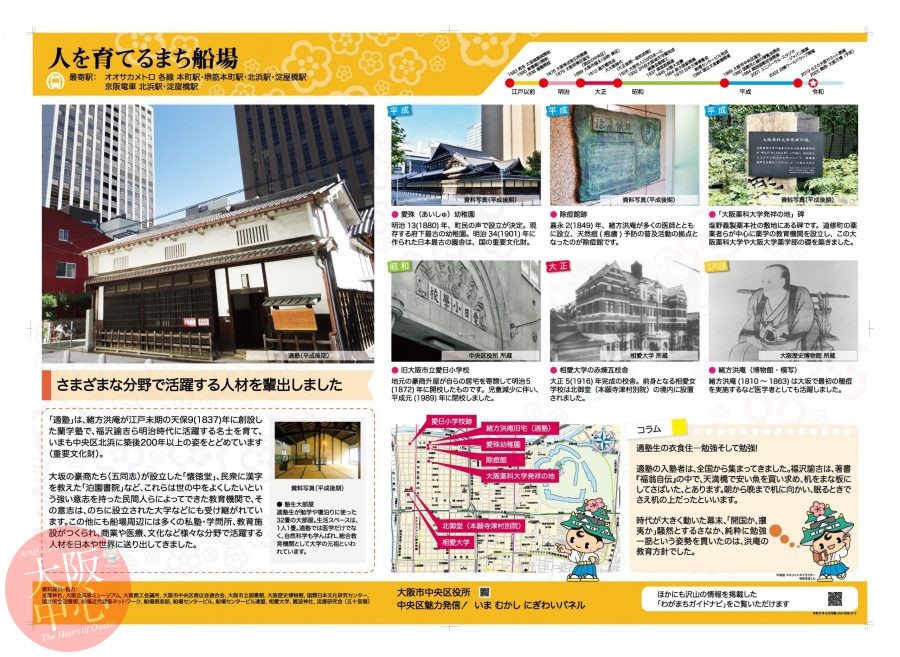
Developing a workforce that contributes to various fields Tekijuku is a Rangak …
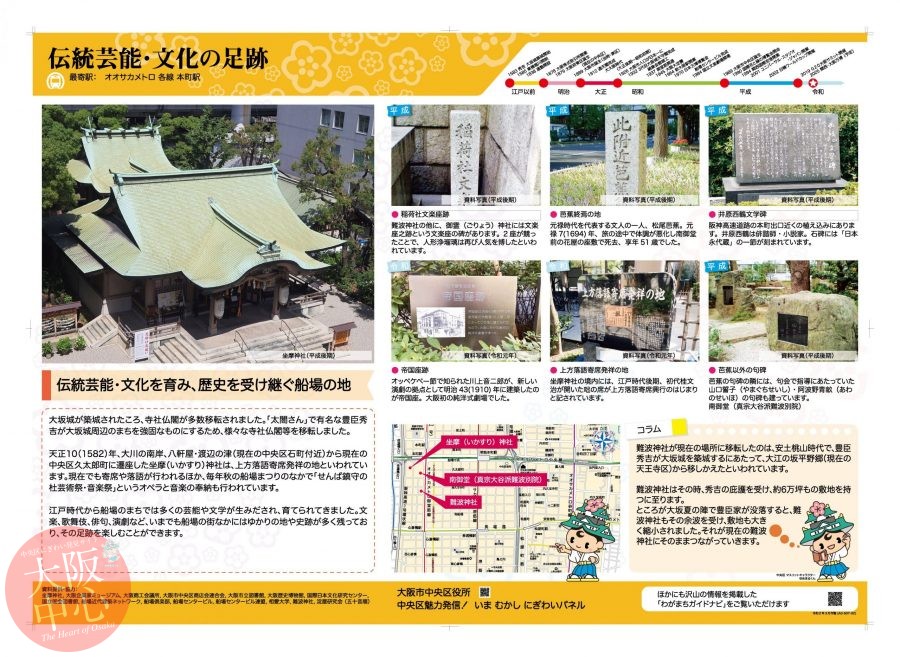
Semba, embracing traditional performing arts and culture and inheriting histor …
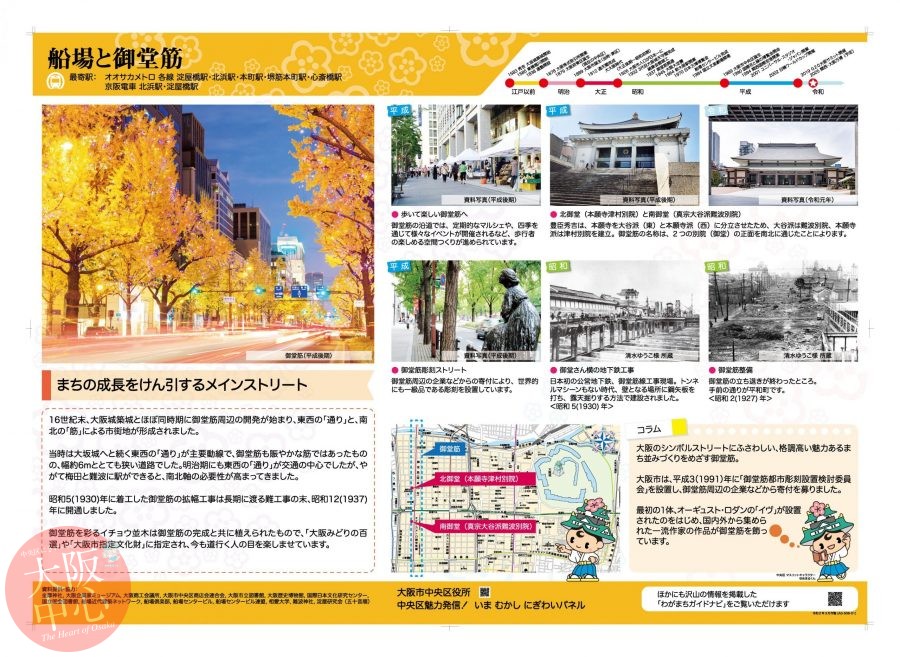
The city’s main street, leading the way to prosperity At the end of the 16th c …
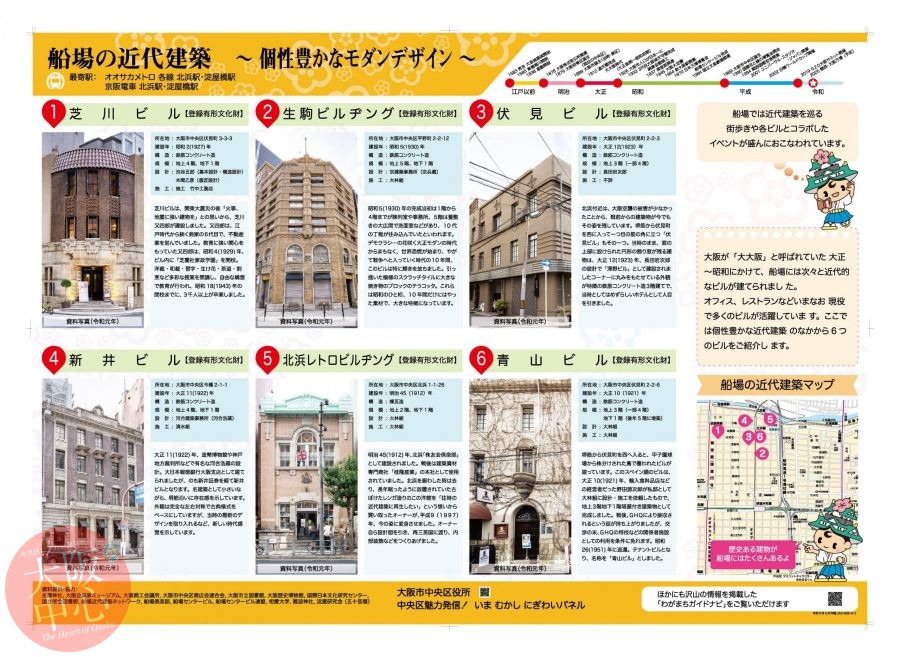
Shibakawa Building (registered as a Tangible Cultural Property) The Shibakawa …
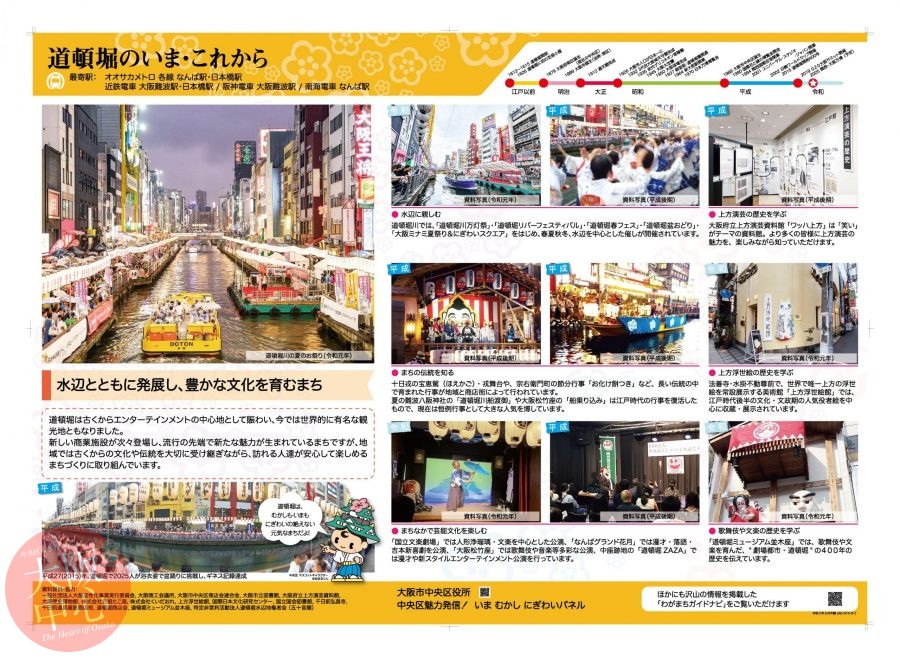
Looking to the future as we inherit and pass on tradition and culture. Semba h …